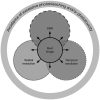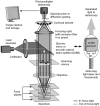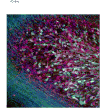Fluorescence microscopy: a concise guide to current imaging methods
- PMID: 20066655
- PMCID: PMC3805368
- DOI: 10.1002/0471142301.ns0201s50
Fluorescence microscopy: a concise guide to current imaging methods
Abstract
The field of fluorescence microscopy is rapidly growing, providing ever increasing imaging capabilities for cell and neurobiologists. Over the last decade, many new technologies and techniques have been developed which allow for deeper, faster, or higher resolution imaging. For the non-expert microscopist, it can be difficult to match the best imaging technique to the biological question to be examined. Picking the right technique requires a basic understanding of the underlying imaging physics for each technique, as well as an informed comparison and balancing of competing imaging properties in the context of the sample to be imaged. This unit provides concise descriptions of a range of commercially available imaging techniques and provides a tabular guide to choosing among them. Techniques covered include structured light, confocal, total internal reflection fluorescence (TIRF), two-photon, and stimulated emission depletion (STED) microscopy.
Figures








References
-
- Boccacci P, Bertero M. Image-restoration methods: basics and algorithms. In: Diaspro A, editor. Confocal and Two-Photon Microscopy: Foundations, Applications, and Advances. Wiley-Liss; New York: 2002. pp. 253–269.
-
- Coling D, Kachar B. Theory and application of fluorescence microscopy. Curr Protoc Neurosci. 1997;Chapter 2:1. Unit 2. - PubMed
-
- Eisenstein M. Helping cells to tell a colorful tale. Nat Methods. 2006;3:647–655.
-
- Gustafsson MG. Surpassing the lateral resolution limit by a factor of two using structured illumination microscopy. J Microsc. 2000;198:82–7. - PubMed
Publication types
MeSH terms
Grants and funding
LinkOut - more resources
Full Text Sources
Other Literature Sources

